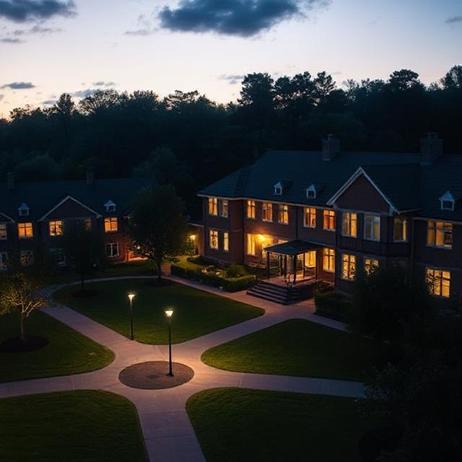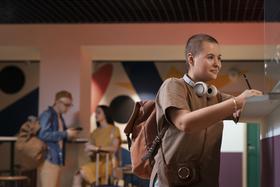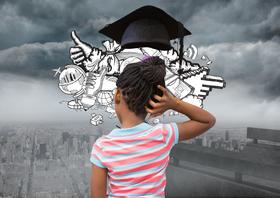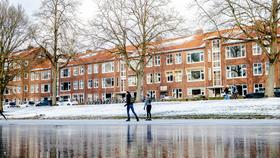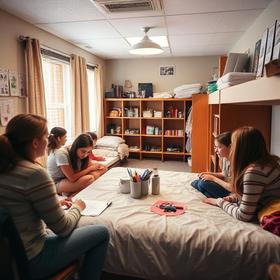Boarding School Safety: What Parents Should Ask Before Enrolling
Selecting a boarding school is a significant decision—and ensuring your child’s safety should be among your top priorities. In 2025, parents must navigate evolving risks: mental-health pressures, digital threats, peer dynamics, and facilities issues. This article equips you with the framework and specific questions to ask when assessing boarding school safety.
Why Safety Must Be Proactively Assessed
Boarding schools extend education well beyond the classroom: students live, learn and socialise on campus 24/7. That intensity increases the importance of physical, emotional and digital safety. A recent review noted that boarding schools are now much more mindful of risk management than a decade ago. College Confidential Forums According to one resource, “20 Questions Every Parent Should Ask” about school safety apply directly to boarding settings. School Safety
Rather than assume that “it’s safe”, it is critical to ask concrete questions—and insist on transparency. Below are key domains and questions to guide your conversation with prospective schools.
Core Domains of Safety to Investigate
1. Physical and Campus Security
Questions to ask:
How is access to dorms and academic buildings controlled? Are there entry card systems, visitor sign-in logs, CCTV?
What is the ratio of staff to boarders during day and night?
Are there regular safety drills (fire, lock-down, weather emergency)?
Are buildings and grounds well maintained (lighting, dorm room locks, surveillance cameras)?
Why this matters:
Dormitories are the student’s “home” away from home. If supervision is lax or entry uncontrolled, risk increases (bullying, hazing, unauthorised visitors). A robust physical-security regime signals the school takes safety seriously.
2. Student Well-being, Mental Health and Peer Dynamics
Questions to ask:
How many counsellors, psychologists or wellness professionals are on staff? What is the student-to-counsellor ratio?
What programming exists around substance misuse, social media behaviour and healthy peer relationships?
How does the school monitor and respond to peer misconduct (hazing, bullying, sexual misconduct)?
What are the school’s protocols when a student is homesick or in crisis overnight?
Why this matters:
Boarding life can amplify social, emotional and behavioural pressures. Schools that invest in student wellness and open channels for help are better prepared to mitigate issues before they escalate.
3. Communication & Transparency with Families
Questions to ask:
How frequently will I receive reports/updates about my child’s well-being and adjustment?
What channels exist for raising concerns (anonymous tip line, parent portal, dorm-parent meetings)?
In case of an emergency—medical, behavioural or weather-related—how will you notify me?
Are there opportunities for parents to visit, stay overnight, or meet with dorm staff/regents?
Why this matters:
Parents entrust the school with their child’s daily care. Clear, consistent communication builds trust, ensures visibility and allows swift response when issues arise.
4. Emergency Planning & Risk Management
Questions to ask:
Does the school publish its safety/emergency procedures? Are they updated annually?
Are drills performed routinely (e.g., lockdown, evacuation, medical emergency)? What was the last real-life scenario and how was it handled?
How is visitor screening handled at night and on weekends? Are there security staff on duty 24/7?
Does the school review incident data (in-house or independent) and adjust procedures accordingly?
Why this matters:
No institution can guarantee zero risk, but robust planning, rehearsal and accountability reduce the chance of unmanaged incidents. A school that treats safety as a living process—rather than a one-time checklist—shows commitment.
5. Fit with Your Child’s Needs & Culture of the School
Questions to ask:
What is the boarding house culture (mixed-ages, single-gender, day/boarder mix)?
How are new boarders integrated into the community (orientation, mentoring, oversight)?
What is the school’s history regarding staff turnover, disciplinary incidents or parental complaints?
Does the school solicit feedback from students and families about dorm life and safety?
Why this matters:
Safety isn’t just about systems—it’s about culture. A school that fosters community, trust and openness is a safer environment than one that relies purely on policy. As one boarding-parent forum noted:
“We found it interesting that… a couple of the single-gender schools we visited use ‘professional’ dorm parents … we used the number of dorm parents per student as one factor.” College Confidential Forums
Safety Checklist Table for Parents
| Safety Domain | Key Questions to Ask | What to Look For in Responses |
|---|---|---|
| Physical / Campus Security | Access control, staff-student ratios, camera coverage | Detailed figures, recent upgrades, clear explanation |
| Student Well-being & Peer Dynamics | Counsellor staffing, peer-misconduct protocols | Full-time wellness staff, regular training on behaviours |
| Communication & Family Engagement | Parent contact frequency, reporting channels | Parent portal, scheduled updates, transparent policies |
| Emergency Planning & Risk Management | Drill frequency, 24/7 security, incident reporting | Published procedures, real-life case examples |
| School Culture & Fit | Boarding-house richness, orientation process, student feedback | Mentorship programmes, student voice, stable staff |
Real-World Example: Reflecting Developments in 2025
Even respected institutions are devoting resources to safety reviews and oversight. For example, a recent investigation at one boarding facility led to expanded CCTV, enhanced night-staffing and a full cultural audit. These actions reflect a broader trend: boarding schools are recognising the need for transparency and continuous improvement. Herald Sun
As a parent, pay attention not only to what a school claims but how it follows through: Are upgrades recent? Are former incident reviews published? Is improvement sustained?
Summary: Top 10 Questions to Ask
How is dorm access managed after 10 pm and on weekends?
What is the exact staff-to-student ratio in the largest dorm?
How often do you run emergency drills and when was the last one?
What wellness and mental-health resources are available?
How are peer misconduct and hazing incidents handled and what is the track record?
How will I be informed if something about my child’s safety concerns you?
How can a parent engage or visit to observe the boarding-house environment?
What is your most recent safety-improvement initiative and how many follow-up actions were taken?
How do you gather and act upon feedback from boarders about their sense of safety?
How are new boarders oriented and monitored during their initial weeks on campus?
Final Thoughts
Choosing a boarding school is about more than academics, activities or campus beauty—it’s about creating a secure and supportive home-away-from-home. By focusing deliberately on the boarding school safety dimension—covering facilities, community, communication and culture—you gain clarity, confidence and control in your decision-making process.
Remember: the best boarding schools will welcome these questions and offer transparent responses. If they hesitate, it could signal a red flag. As you evaluate options in 2025, let safety be a key criterion—not an afterthought.
Your child’s experience, growth and peace of mind depend on it.

